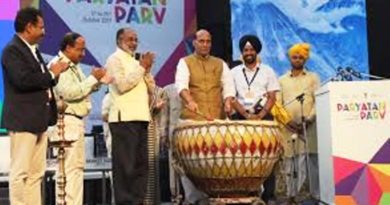Sustainability a Prerogative for Indian Façade and Fenestration Industry – ANAROCK Report
Sustainable and eco-friendly façade developments focused on energy conservation and reduced dependency on fossil fuels are the new imperative of the rapidly-growing façade and fenestration industry, states ANAROCK’s Fenestration Industry Report. The report, in association with World of Fenestration, was released at the World of Fenestration 2019 event in New Delhi today.
Santhosh Kumar, Vice Chairman – ANAROCK Property Consultants says, “Rapid real estate and infrastructure development in India directly impact the demand for façade and fenestration products, particularly in office spaces. Our cities are going increasingly vertical, and vertical development created heat islands which environmentally unfriendly products exacerbate. Moreover, eco-friendly façade and fenestration products promote officegoers’ wellbeing and productivity.”
“The quest for creating iconic office structures plays heavily on façades and fenestration to evoke a modern aesthetic ethos. However, this quest brings with it a real danger of ignoring the environmental prerogatives of sustainable development. This report analyses the best practices followed in countries like UK and UAE and makes a case of India’s adoption of these practices.”
Mihir Thakkar, Head – Fenestration, World of Fenestration says, “The next leap for high-rise structures and glass façade buildings is definitely sustainable and eco-friendly façades which focus on energy conservation and reduced dependency on fossil fuels. Future-readiness in the face of mounting environmental concerns is the need of the hour. We need newer products and designs, and must invent superior materials – these must be the Indian façade and fenestration industry’s priorities in the coming years.”
Regular PVC was a common plastic used in construction due to its strength and light weight. However, it uses environmentally deleterious plasticisers to enhance its flexibility. uPVC (un-plasticized PVC) is the new environmental standard in fenestration. This environmentally friendly variant currently accounts for only 10% market share, but it is a INR 1,500 Cr business.
Developers across leading global cities have accepted the new environmental façade and fenestration prerogatives. In India, wood and steel are rapidly being replaced by uPVC – though not fast enough.
The report draws some interesting comparisons. For instance, the UAE has the tallest structures in the world, while the UK has relatively low-rise buildings. However, both countries put great emphasis on corrosion-resistant building facades. Considering the building heights and weather conditions in UAE, specifications are more scoped towards thermal insulation and wind cycles. In UK, uPVC product material is more popular.
In India, industry stakeholders now increasingly demand better specifications from the facade and fenestration industry, as well as IS code development and




